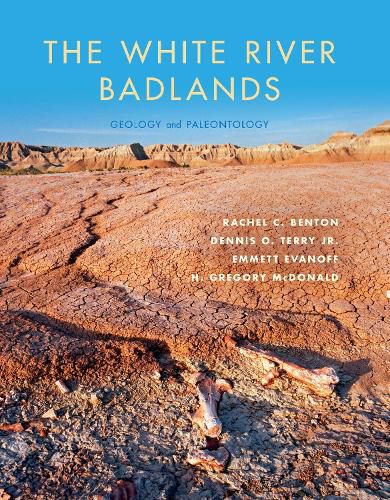Readings Newsletter
Become a Readings Member to make your shopping experience even easier.
Sign in or sign up for free!
You’re not far away from qualifying for FREE standard shipping within Australia
You’ve qualified for FREE standard shipping within Australia
The cart is loading…






The forbidding Big Badlands in Western South Dakota contain the richest fossil beds in the world. Even today these rocks continue to yield new specimens brought to light by snowmelt and rain washing away soft rock deposited on a floodplain long ago. The quality and quantity of the fossils are superb: most of the species to be found there are known from hundreds of specimens. The fossils in the White River Group (and similar deposits in the American west) preserve the entire late Eocene through the middle Oligocene, roughly 35-30 million years ago and more than 30 million years after non-avian dinosaurs became extinct. The fossils provide a detailed record of a period of abrupt global cooling and what happened to creatures who lived through it. The book provides a comprehensive reference to the sediments and fossils of the Big Badlands and will complement, enhance, and in some ways replace the classic 1920 volume by Cleophas C. O'Harra. Because the book focuses on a national treasure, it touches on National Park Service management policies that help protect such significant fossils.
$9.00 standard shipping within Australia
FREE standard shipping within Australia for orders over $100.00
Express & International shipping calculated at checkout
The forbidding Big Badlands in Western South Dakota contain the richest fossil beds in the world. Even today these rocks continue to yield new specimens brought to light by snowmelt and rain washing away soft rock deposited on a floodplain long ago. The quality and quantity of the fossils are superb: most of the species to be found there are known from hundreds of specimens. The fossils in the White River Group (and similar deposits in the American west) preserve the entire late Eocene through the middle Oligocene, roughly 35-30 million years ago and more than 30 million years after non-avian dinosaurs became extinct. The fossils provide a detailed record of a period of abrupt global cooling and what happened to creatures who lived through it. The book provides a comprehensive reference to the sediments and fossils of the Big Badlands and will complement, enhance, and in some ways replace the classic 1920 volume by Cleophas C. O'Harra. Because the book focuses on a national treasure, it touches on National Park Service management policies that help protect such significant fossils.